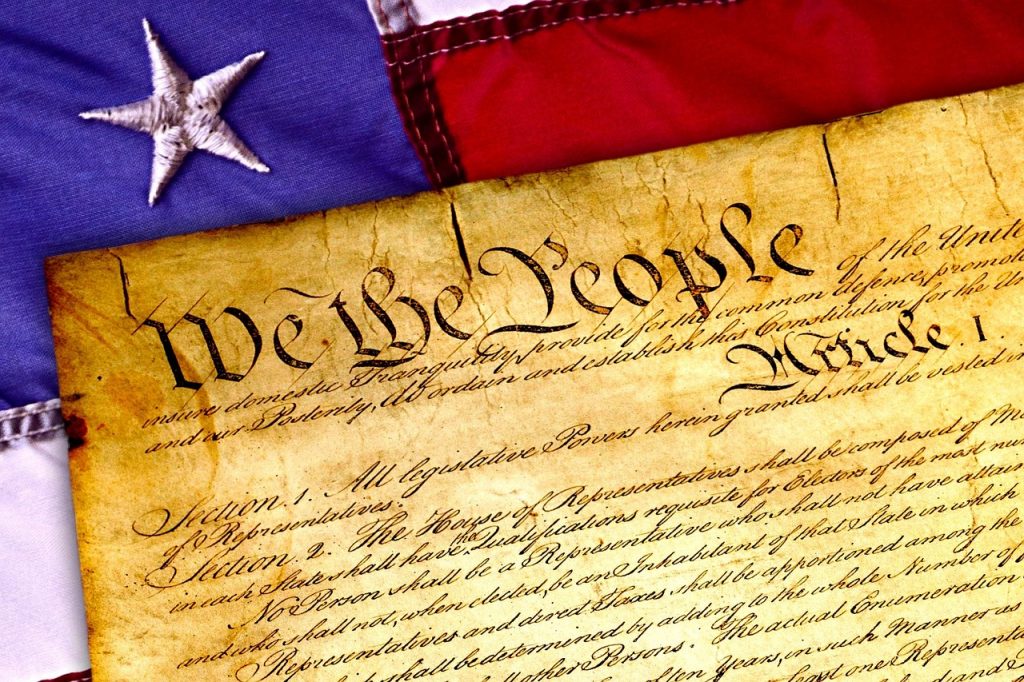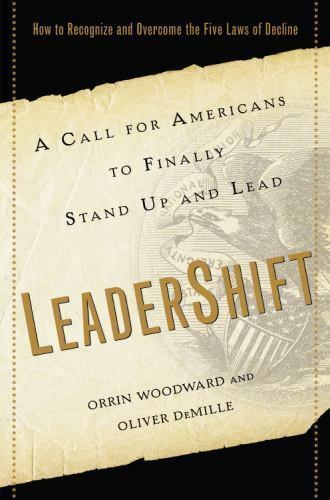News of the Day: Don’t be a Dummy!
August 15th, 2019 // 7:31 am @ Oliver DeMille
Where Do You Stand?
This headline, “Don’t Be a Dummy!,” is sincere. The sad truth is that too many Americans act like “dummies” too much of the time.
For example, consider the following quote:
“Public Policy Polling asked a broad sample of Democratic and Republican primary voters whether they would support bombing Agrabah. Nearly a third of Republican respondents said they would, versus 13 percent who opposed the idea. Democratic preferences were roughly reversed; 36 percent were opposed, and 19 percent were in favor. Agrabah doesn’t exist. It’s the fictional country in the 1992 Disney film Aladdin. Liberals crowed that the poll showed Republicans’ aggressive tendencies. Conservatives countered that it showed Democrats’ reflexive pacifism. Experts in national security couldn’t fail to notice that 43 percent of Republicans and 55 percent of Democrats polled had an actual, defined view on bombing a place in a cartoon.”*
Another way to explain this is that too many of us act like dummies when it comes to current events.
How? First, we too often allow ourselves to hold and express kneejerk opinions on things without studying them and learning even the most basic details.
Second, we are frequently sure we’re right in our opinions, even when we’re just expressing careless views without studying any of the facts.
Third, we too often choose the lazy path when a 30-second search of a topic, or in this case a world map, would tell us that Agrabah is a fictional land from a cartoon movie. Too many Americans** do this kind of thing over and over, often without even realizing it. This isn’t an issue of conservative or liberal, red or blue. It’s a simple matter of assuming we know things instead of immediately saying “I don’t know” and then just bothering to look it up.
If Thomas Jefferson, James Madison, or Abigail Adams had been asked about invading or bombing Agrabah, it’s pretty obvious to anyone who has read their history that they would have paused, pondered, and then done some research. Simple thing. Big consequences.***
So, seriously, let’s not be dummies. When we hear, read, or see something in current events that we don’t know about, let’s be the kind of citizens who take a some time and look up what’s actually happening. If it’s deep, or complex, or contested by the conservative versus liberal media, let’s study a bit deeper.
A free people seldom stay free if they don’t stand up for their freedoms, and that’s hard to do if they don’t take the time to look up things they don’t know. In our system of government the opinions of citizens matter. It’s up to each of us as a citizen to make sure that our opinions are based on knowledge. That’s the only way we can act with wisdom.
A challenge to all of us: When you hear something in current events that you don’t know, or even if you’re just not sure, take a bit of time to look it up. Read about it. Study different viewpoints on the issue. Ponder it for yourself. Then, based on knowledge, develop your opinion. If you already do this, great. If not, let’s all adopt this as a new habit. This very small thing can have a huge, positive impact on freedom. The opposite, just having opinions but not really finding out, definitely hurts our nation.
Also: This is important. Pass it on!
Notes
*From Foreign Affairs, Tom Nichols, “How America Lost Faith in Expertise”
**And too many of our international friends as well.
***See Real Clear Politics, David Shribman, “America’s Knowledge Crisis“; The Atlantic, Yascha Mounk, “Republicans Don’t Understand Democrats–And Democrats Don’t Understand Republicans: A new study shows Americans have little understanding of their political adversaries–and education doesn’t help“; Politico, Nick Gass, “Americans bomb Pew test of basic political knowledge“; The Atlantic, David Pozen, Eric Talley and Julian Nyarko, “Republicans and Democrats are Describing Two Different Constitutions“
Category : Blog &Citizenship &Community &Culture &Current Events &Education &Featured &Foreign Affairs &Generations &Government &History &Information Age &Leadership &Liberty &Politics
News of the Day By Oliver DeMille: Election 2020
August 3rd, 2019 // 12:48 pm @ Oliver DeMille
Election 2020
 Who can challenge Donald Trump in the 2020 election? This question is important — whether you like Trump and plan to vote for him, or don’t like him and plan to vote for the 2020 Democrat nominee, or don’t like him much but feel he’s better than the alternatives.
Who can challenge Donald Trump in the 2020 election? This question is important — whether you like Trump and plan to vote for him, or don’t like him and plan to vote for the 2020 Democrat nominee, or don’t like him much but feel he’s better than the alternatives.
Who can challenge Trump?
Trying to answer this question for myself led to four different lines of thinking, each of them interesting:
Four Options
First, none of the current candidates on the Democrat side seem to possess the ability to effectively inspire broad popular support. One may eventually rise to the top, of course, but it seems it’s going to take a new person with a new charisma, not one of the old names like Biden, Bernie, or Warren. Possible new faces: Kamala Harris? Amy Klobuchar? Andrew Yang? Other? Maybe. But so far none of them have gained any major traction. It’s early, though, so this could change.
Second, one name does strike fear into the hearts of many Trump supporters: Michele Obama. To date she’s strongly denied any interest in running for the Oval Office. But her numbers would likely skyrocket to the top of the ticket if she announced. Will the Obamas refuse this call to power? So far, yes.
Third, perhaps the biggest challenge to Trump in 2020 could come from Jerome Powell. As chairman of the Federal Reserve, he and his colleagues could push interest and inflation rates in directions that would significantly dampen the U.S. economy, throwing a major wrench into Trump’s top accomplishment and the core of his support. This is seldom, if ever, mentioned in the media, but it remains a significant possibility. Stay tuned…and keep watch.
Fourth, a considerable problem for Trump could come from the success of Republican economic policies at the state level. Specifically, no Republican can win the presidency in the current system unless they win both Florida and Texas, but state-level Republican leaders and their pro-growth, low-regulation policies have attracted a lot of businesses and people relocating to these states. The challenge for Trump, and Republicans running for Congress, is that a preponderance of those moving into Florida and Texas vote liberal, not conservative. Trump beat Hillary in Florida in 2016 by just 112,911 votes, and over a million new people have moved to the Sunshine State since then, with over a million more expected by the 2020 election.
The same is true with Texas—Trump won by a more convincing 807,179 votes, but Texas has grown by 1.2 million since 2016 and is projected to grow by a total of approximately 2.3 million by election day 2020 (with about a quarter of these voters moving from California). This significantly changes the makeup of the electorate. Again, more than a mere majority of those relocating to Florida and Texas tend to vote liberal.
Whatever your politics, these four things are worth watching as we move closer to election night 2020.
Interested in more?
 (Oliver DeMille is the author of FreedomShift, which addresses the three key things Americans must to do in the months and years just ahead to effectively protect and keep our freedoms during the growing attack on liberty. Available Here>>)
(Oliver DeMille is the author of FreedomShift, which addresses the three key things Americans must to do in the months and years just ahead to effectively protect and keep our freedoms during the growing attack on liberty. Available Here>>)
Category : Aristocracy &Blog &Citizenship &Community &Constitution &Culture &Current Events &Economics &Featured &Generations &Government &History &Independents &Information Age &Leadership &Liberty &Politics
The News of the Day
August 1st, 2019 // 4:03 pm @ Oliver DeMille
The Mueller Hearing
 Two big things do stand out. First, Mueller was asked a number of questions about the report but frequently didn’t know what the report said. Even when Congressmen read quotes from the report, Mueller repeatedly couldn’t remember names or details. He seemed to not know much of what was written in his own report. Strange. To give someone so much power—literal power over the lives of real Americans—but who seems feebly unaware of what his own report says or even the names and details written in his report, is scary. Also, to the chagrin of many on the Left, it came out that Natalia Veselnitskaya, the Russian lawyer who famously met with Don Jr. in Trump Tower to share “dirt” on the Hillary campaign, actually met more times and much longer with the Hillary campaign to communicate “dirt” on Trump—making everything critics have claimed about the “inappropriate” Trump Tower meeting much worse for Hillary than for Trump.
Two big things do stand out. First, Mueller was asked a number of questions about the report but frequently didn’t know what the report said. Even when Congressmen read quotes from the report, Mueller repeatedly couldn’t remember names or details. He seemed to not know much of what was written in his own report. Strange. To give someone so much power—literal power over the lives of real Americans—but who seems feebly unaware of what his own report says or even the names and details written in his report, is scary. Also, to the chagrin of many on the Left, it came out that Natalia Veselnitskaya, the Russian lawyer who famously met with Don Jr. in Trump Tower to share “dirt” on the Hillary campaign, actually met more times and much longer with the Hillary campaign to communicate “dirt” on Trump—making everything critics have claimed about the “inappropriate” Trump Tower meeting much worse for Hillary than for Trump.
Second, and this is a big deal, the Mueller Report, and Mueller’s testimony in the hearings, states that the Special Counsel didn’t “totally exonerate” the accused. This is a whole new approach to American law. Prosecutors in the United States have never had the authority or power to “exonerate” anyone. They can charge, or not charge, a person. But they don’t exonerate, or withhold exoneration. This is at the heart of the freedom that the accused is presumed innocent until proven guilty. If we live in a nation where a citizen must receive “exoneration” from a government prosecutor or be presumed guilty, or receive “total exoneration” from a prosecutor or be presumed partially guilty, we’ve lost a major part of American freedom. Indeed, this was the most important difference between Anglo-Saxon law and European Norman law in history—and the American Framers loudly rejected the Norman approach and established “innocent until proven guilty” as the bedrock of American law. When asked about this Mueller doubled down that the prosecutor can decide whether to exonerate or not exonerate an accused American, a return, at least in his mind, to the historical Norman approach of Dictatorial law.
No prosecutor in U.S. history has had, or claimed to have, this power until now. This is a serious and dangerous example of “creep” by government usurping powers that are not part of the Constitution. Unless Americans refuse to let this stand, another major freedom will be lost. This campaign is already underway. For example, the lead headline for the hearings by CBS was: “Mueller: President Trump was not totally exonerated in Russia probe…” In response: First, he was in fact entirely cleared of Russian collusion charge. The not “totally exonerated” language was applied only to the issue of “obstruction of justice”. CBS absolutely lied in printing the headline this way. Second, no prosecutor in U.S. history has ever had the power to proclaim an accused American “not totally exonerated”; nor does any prosecutor in the U.S. have that power today; nor does Robert Mueller have that power. But the media pretended, and reported, that he does. Another lie. A very dangerous one. A number of other media outlets issued similar misleading headlines during and after the hearings (see, specifically, NBC, ABC, CNN, HuffPost, NPR, BBC).
If Americans let this view stand, I predict we’ll see every future U.S. President, from both political parties, who faces an opposing party in the House, attacked by such hearings and special investigations and be labeled “not totally exonerated”. Likewise, and worse, we’ll see this Mueller precedent abused by numerous prosecutors around the nation who use “not exonerated” as a new power against American citizens, and “innocent until proven guilty” will decline as a basic freedom. Any prosecutor who claims “we didn’t exonerate” an accused person is directly rejecting the system of “innocent until proven guilty” and replacing it with “guilty unless a prosecutor exonerates you”. This moves us back toward the Norman dictators, away from the Anglo-Saxon and American Founding systems of law. Any prosecutor who does this is directly attacking the U.S. Constitution. This includes Robert Mueller. On a personal note, I haven’t been this sickened by the actions of a national government official since the George W. Bush Administration used the Justice Department to investigate political opponents for the specific purpose of influencing the election, or since Eric Holder covered up Fast and Furious. All three are examples of glaring government corruption. Add the Benghazi scandal to this same disgusting list.
In the weeks ahead, many Democrats, and many in the left-leaning mainstream media, will likely repeat the storyline that Mueller “has given us evidence of Trump obstruction”, and the Right will continue to say the exact opposite. The words of the Constitution should be the way we clearly understand this. Did the president engage in “treason, bribery, or high crimes and misdemeanors” with regard to Russia in the 2016 election? Meuller said no, in both his Report and the hearings. Did the president engage in “treason, bribery, or high crimes and misdemeanors” in regard to obstructing justice? Mueller said in the Report that there was not “sufficient” evidence to charge the president for this, but he said in the hearing that if a regular citizen, not a president, had been the target of the investigation, he would have seen sufficient evidence to charge. He later also joked that he probably wouldn’t have found “sufficient” evidence if the target was a member of Congress. This jest, and the way the crowd of Congressmen reacted to it, reinforces the shocking double standard at play in all this. Government officials are to be treated differently than regular citizens, by this standard. What does the actual law say about this? Most attorneys and judges on the Right say no, there was not sufficient evidence to charge a regular citizen, and most on the Left say yes–at least those cited in the media. This is political posturing, pure and simple.
Compare this to the Bill Clinton investigation. The Independent Counsel indicted Clinton on 11 specific counts. Special Counsel Mueller’s report says they didn’t have sufficient evidence to charge Trump on even 1 count, or to recommend to the Attorney General a charge on even 1 count. Let’s just apply the Constitution. If a majority of the House believes the president has committed “treason, bribery, or other high crimes and misdemeanors”, they should impeach him. And then the Senate can judge and make the final decision—impeaching by a two-thirds majority if it so chooses. Then the citizens can analyze what each Congressman and Senator voted on this, and respond to it in the next election. That’s the Constitutional way to handle it. The problem is that the media is trying hard to sway popular opinion in this, instead of simply reporting the facts. But that’s okay. The American people are smart enough to see through media bias in reporting. It’s so blatant now that almost everyone notices.
The big danger, something few Americans do realize, is that we now have the basis for a new precedent, a legal approach that some prosecutors will almost certainly claim as precedent in the future (and that some judges will inevitably allow), that an accused American can be presumed guilty “in certain circumstances” unless he/she is “totally exonerated” by the prosecutor. Such a reversal of “innocent until proven guilty” to an alternative standard of “guilty unless declared ‘totally exonerated’ by the prosecutor” is a disaster for freedom. Most people won’t even realize it’s a thing for many years to come unless it is used directly against them in court. But if it is ever used in America, even once, it is a massive attack on freedom. It will likely be applied quietly and behind closed doors many times, if it follows the normal pattern such precedent take in our history. This is precisely how past major reversals of our freedoms have gained traction in the judicial branch, one case and one courtroom at a time. For example, this is how precedent became a “higher law” of the land and gave the Court unconstitutional power over all law instead of just authority in one specific case at a time, how people serving on juries largely lost their official power to nullify bad laws in a specific case, and how trial by jury became trial by people who don’t know the accused rather than trial only by people who knew the accused (the legal term is “jury of the vicinage”). All of these changes are now the norm, and most people think they always have been the American way. But they are in fact major losses of our freedoms, drastic departures from the intent of the Founding Fathers and the Constitution. Few people even know about them, mostly because all of them were lost the same way “innocent until proven guilty” is now being undermined—quietly, in the fine print of distant courts. But the loss of freedom is drastic and real. The Mueller Report, the strongest attack on “innocent until proven guilty” in American history, marks a very bad day for America, and for our freedom.
Category : Blog &Citizenship &Community &Constitution &Current Events &Generations &Government &History &Information Age &Leadership &Liberty &Politics
THE JEFFERSON-MADISON DEBATES: Can the Constitution Survive?
July 17th, 2019 // 8:20 am @ Oliver DeMille
PART I
 European “Conservatism” and American “Conservatism” are not the same thing.[i] It’s important to realize that “conservatism,” in the generic, isn’t defined as a specific platform or set of ideals. It’s simply the posture and priority of “conserving” a certain tradition or form, as opposed to “liberal–ly“ or “progressive-ly” moving away from said tradition or form.
European “Conservatism” and American “Conservatism” are not the same thing.[i] It’s important to realize that “conservatism,” in the generic, isn’t defined as a specific platform or set of ideals. It’s simply the posture and priority of “conserving” a certain tradition or form, as opposed to “liberal–ly“ or “progressive-ly” moving away from said tradition or form.
As George Will has pointed out, in Europe “Conservatism” was rooted in protecting monarchy, aristocracy, and the class system (where the many are ruled by the few), while in America “Conservatism” means protecting and maintaining the U.S. Constitution and the principles upon which it was framed, including the key principles articulated in the Declaration of Independence.[ii] Indeed the Declaration itself initiated the end of European Conservatism in America.[iii]
The tug-of-war between American Conservatism and Progressivism has been part of the American story ever since.[iv] Progressivism has gone through several stages–all of them a direct and escalating attack on the Constitution:
Step 1- Statism: Increase the size and scope of the government
Step 2- Centralized Statism: Increase the size and scope of the federal government
Step 3- Liberalism: Use the increasing size and scope of the federal government to redistribute money from the affluent to the lower classes by state force
Step 4- Socialism: Use the increasing size and scope of the federal government to redistribute money from the affluent and middle classes to the lower classes by state force, putting control of the federal government in the hands of a few, and also mandate social and environmental causes that require the federal government to grow even more
Step 5- Globalized Socialism: Expand progressive goals to include federal government programs for people around the globe (not limited to American citizens), requiring a massive expansion of government size and scope and progressive transfers of power and sovereignty from the American voters (and voters within other nations) to international organizations, agreements, and entities
We are currently in the High-Growth Phase of Step 4 and the Early-Growth Phase of Step 5.
PART II

American Conservatism, in contrast, focuses on implementing the U.S. Constitution, a return to Constitutional limited government (to the extent that we’ve moved away from the Constitution), and a citizenry that rules itself rather than being ruled by a class of elites.[v] Today the battle between Conservatism and Progressivism is in full swing.
To measure which side is ahead in this contest, the scoreboard is a simple two-question matrix:
- Is the size, scope, debt, and expenditure of the federal government shrinking?
If “Yes,” Conservatism is winning.
- Is the size, scope, debt, and expenditure of the federal government expanding?
If “Yes,” Progressivism is winning.
This is the only real indicator of direction, momentum, and victory. Every other possible marker can be faked or obscured. What this scoreboard shows is that the following administrations in the modern era have increased American Progressivism (thus decreasing Conservatism/Adherence to the U.S. Constitution):
- Roosevelt
- Truman
- Eisenhower
- Kennedy
- Johnson
- Nixon
- Ford
- Carter
- Reagan
- Bush
- Clinton
- Bush
- Obama
- Trump
In contrast, the following administrations reduced the scope, size and expenditure of the Federal Government, increasing American Conservatism and adherence to the U.S. Constitution:
NONE
This comes as a surprise to many conservatives. Indeed, this reality makes it clear which approach is winning: Progressivism. But surely some of the more conservative administrations at least significantly slowed down the increasing scope, size and expenditure of government, right?
The following administrations significantly slowed these things down:
NONE
This must have been caused by the opposing liberal Congress faced by certain administrations, right? The following administrations attempted to significantly slow the increase of the Federal Government’s size, scope, and expenditure, but were thwarted by the Congress:
NONE
At first glance, for conservatives at least, this doesn’t seem to make sense. Clearly there is a big difference between some of the administrations, that of Carter and Reagan for example, or Obama and Trump. While this is true, the actual differences are not what most people tend to think.
Where the genuine application of Conservative principles often results in significant benefits to the nation, the overall trend since 1944 can only be characterized as firmly escalating in the direction of Progressivism. The nation has occasionally profited from a short-term implementation of Conservative principles (e.g. Eisenhower, Reagan, Trump), but this has not resulted in a reversal of the Progressive trend.
Moreover, during this entire timeline, Progressive momentum has accelerated. It has never reversed. Conservatism (protection and application of the U.S. Constitution and Constitutional limits) has given way to Progressivism (the expansion of the welfare state and the size/scope of the central government) during every administration in the post-World War II era.
A more accurate understanding of these trends is possible if we consider the dominant Steps of Progressivism implemented in modern American history. This allows us to more clearly rate the Conservatism vs. Progressivism of each administration:
Dominant Focus of Washington D.C. from 1860-1913
Step 1- Statism: Increase the size and scope of the government
Dominant Focus of Washington D.C. from 1913-1944
Step 2- Centralized Statism: Increase the size and scope of the federal government
Dominant Focus During the Truman, Kennedy, and Clinton administrations
Step 3- Liberalism: Use the increasing size and scope of the federal government to redistribute money from the affluent to the lower classes by state force
Dominant Focus During the Eisenhower, Nixon, Ford, Reagan, Bush, Bush, and Trump administrations
Step 2- Centralized Statism: Increase the size and scope of the federal government
Dominant Focus During the Roosevelt, Johnson, and Obama administrations
Step 4- Socialism: Use the increasing size and scope of the federal government to redistribute money from the affluent and middle classes to the lower classes by state force, putting control of the federal government in the hands of a few, and also mandate social and environmental causes that require the federal government to grow even more
Dominant Focus of the Current Left since 2016
Step 5- Globalized Socialism: Expand Progressive goals to include federal government programs for people around the globe (not limited to American citizens), requiring another massive expansion of government size and scope and progressive transfers of power and sovereignty from the American voters (and people within other nations) to international organizations and entities
PART III

There are at least three significant considerations in all of this that every American needs to understand:
- None of the presidential administrations in the post-World War II era have implemented Conservatism (the genuine application of Constitutional limits). All have supported the Progressive agenda at some level (increase of the size and scope of the federal government beyond its Constitutional boundaries, including an expansion of the welfare state). Some administrations promoted this more than others. But all are complicit in Progressivism, while none adhered to Conservatism as defined above (the Application of all Constitutional Limits, versus Increasing the Scope, Size, and Expenditure of Government).
- Presidents considered by many to be the most “Conservative” (including Eisenhower, Reagan, Trump) promoted Step 2 Progressivism but not Step 3 Progressivism. Specifically, they actively increased the size and scope of the federal government, but didn’t drastically increase redistribution of money/programs from the affluent to the lower classes by state force. This led to economic upturn through deregulation—a good result. It did not, however, reverse the momentum of the welfare state or reinvigorate Constitutional limits; as a consequence, the trend toward bigger government and increased Progressivism continues unabated.
- Presidents widely considered the most Progressive (Roosevelt, Johnson, Obama) implemented Step 4 Progressivism (socialism: major redistribution from the upper and middle classes to government programs nominally for the poor and disadvantaged) and drastically increased the growth rate of the long-term Progressive trend. This always coincided with major (albeit medium-length) economic downturn.
There has been no genuinely Conservative presidential administration (one focused on maintaining the limited size and scope of government to the specific limitations of the Constitution) since presidents Harding and Coolidge in the 1920s. All administrations since that time have promoted an expansion of the federal government in size, scope, and expenditure. The growing welfare state (Progressivism) has continually won out over Constitutional limits (Conservatism).
This has been aided by a number of decisions in the Court expanding the scope of the federal government and naming many additional federal powers “constitutional”. Ironically, such decisions are, according to the original words of the Constitution, unconstitutional.[vi]
PART IV
Why?
Why have all administrations since the mid-1920s joined the Progressive trend, even while many have loudly proclaimed their “bona fide Conservatism”? The answer may be as simple as that suggested by George Will[vii]: Most Americans actually like a lot of our government programs. And today we want more of them, not less. We want programs for “other people” to be cut or discontinued, but we tend to cling to government programs that directly benefit us.

Irony is at work here. On the one hand, voters seem to want freedom—but within limits. Specifically, they want more freedom for themselves than for others. And they want government programs—also within limits. The masses want something that has never been a reality—the quality levels attained by private schools, private institutions of higher education, private health care, and private-sector prestige jobs, provided free to all by government, and paid for by “the rich”–“the 1 Percent”.
Another way to describe our situation is that Progressivism has largely won the battle for the hearts and minds of most Americans. The Conservative ethos—that government should protect our freedoms by adhering to the U.S. Constitution, and give us nothing else, nothing at all, because the rest is up to us alone, our individual hard work, tenacity, initiative, ingenuity and good choices—is now largely a foreign concept.[viii] It is as quaint in our cities, and beyond, as vinyl records or public payphones. We want government to do things for us—lots of things. “How else will it get done?” most Americans now ask.
A majority of Americans now want to work less, make more, and receive a lot of extra government benefits paid for by someone else. If that’s what it means now to be an American, then America is on the path to major decline.[ix] And perhaps the most shocking point: Almost nobody is arguing about this.
We argue about whether or not such government benefits should go to illegal aliens. Some say “Yes, of course. Be generous”, while others respond “No way! Don’t make me pay for their needs. What about Americans, what about our needs?” But both sides miss the deeper issue. Again, most Americans now want to work less, get paid more, and receive a lot of extra government programs paid for by someone else. As long as this is our agreed-upon worldview, we’re in decline, and sinking fast.
We have, on one side, those who want more government benefits for everyone. Another side wants fewer government programs/expenditures for those who aren’t Americans.
But where are those who refuse all benefits that the government offers to them, preferring freedom? —the citizens who want to stand on their own, to make their own way without government help, who want to actually be free? Where are those kind of Americans today?
Without them, American-style Conservatism is extinct. Without them, Progressivism has won.
Most modern Americans want independence without having to select the choices that make them independent. “With all the taxes I pay, I’m not going to turn down government benefits.” The problem is, at its root, that government forces us to pay for the welfare state, whether we accept any of its benefits or not. For most people, as a result, rejecting the benefits appears illogical, even stupid. And they’re right.
But can the Constitution survive such a populace? If the masses want to work less, make more, and refuse to reject government benefits, the government will continue to grow. Limited constitutionalism is already over, in such a world.
Prediction: Unless this changes, we will only elect those promising the easy path, and we will vote ourselves consistently into decline. The Republican Party will oscillate between Progressive Steps 2 and 3, while the Democrat Party will swing back and forth between Progressive Steps 4 and 5. Regardless of which side wins elections, the federal government will keep expanding. Freedom will be redefined, redirected, and reduced, and eventually it will disappear, following the long-established pattern of great power nations.[x]
There is, of course, a solution. It is called limited government. It is outlined in the United States Constitution.
First: the federal government must be held to the twenty powers (only 20!) outlined in Article I Section 8 of the U.S. Constitution.
Second: the Executive branch and its agencies must be required (by the voters, and all those they elect) to actually follow the Constitution. Third: the Court must also be required to follow the Constitution (by the voters, and all those they elect), without dodging this duty by claiming that it can simply redefine the document whenever it wants.
The voters have all the power to make these three things happen.
We have the blueprint. It will work, if the voters demand it.
But it will only work if the voters demand it.
 *How can we get regular citizens to be this kind of voter? The answer is outlined in the book LeaderShift: A Call for Americans to Finally Stand Up and Lead, by Orrin Woodward and Oliver DeMille. In LeaderShift you’ll learn the 5 Laws of Declining Nations, why America is currently failing all 5 Laws, and what to actually do about it. Find out how to get America back on track for the long term!
*How can we get regular citizens to be this kind of voter? The answer is outlined in the book LeaderShift: A Call for Americans to Finally Stand Up and Lead, by Orrin Woodward and Oliver DeMille. In LeaderShift you’ll learn the 5 Laws of Declining Nations, why America is currently failing all 5 Laws, and what to actually do about it. Find out how to get America back on track for the long term!
NOTES
[i] See George Will, 2019, The Conservative Sensibility
[iii] See Russell Kirk, 1974, The Roots of American Order
[iv] See Arthur Schlesinger, 1986, The Cycles of American History
[v] See op cit., Kirk; see also W. Cleon Skousen, 1985, The Making of America
[vi] The Constitution of the United States, Article III; see also Madison, Hamilton, Jay, 1989, The Federalist, Papers 78, 80, 83
[vii] See op cit., Will
[viii] See Oliver DeMille, 2014, The U.S Constitution and the 196 Indispensable Principles of Freedom
[ix] See Orrin Woodward, 2014, And Justice for All; see also Jonah Goldberg, 2018, Suicide of the West; see also Thomas Sowell, 2007, A Conflict of Visions
[x] See Paul Kennedy, 1987, The Rise and Fall of the Great Powers
Category : Aristocracy &Blog &Citizenship &Community &Constitution &Culture &Current Events &Economics &Featured &Foreign Affairs &Generations &Government &History &Independents &Information Age &Leadership &Liberty &Politics &Prosperity &Statesmanship
News of the Day: Which Constitution?
July 8th, 2019 // 9:03 pm @ Oliver DeMille

I. Today in the News
There is so much going on in the news these days–big events that have major potential to influence the future of our nation and freedom. Unfortunately, almost all the news is reported with strong partisan leanings. The slant and spin are frequently overwhelming.
To respond, I’ve decided to do an in-the-news series that steps away from current partisan spin and addresses the big news of the day from the perspective of the U.S. Constitution and the viewpoint of the American Founding. It will give readers a different way to look at things. I’ll try to keep these brief and to the point, just a few paragraphs per post. I hope you will comment and share so this can influence people…
II. July 2019: Which Constitution?

Myth: The other side (Democrats or Republicans) don’t care about the Constitution.
Fact: Actually they do. Both sides care deeply about the Constitution. But, it turns out, they care about different Constitutions. This isn’t surprising, given the way Red and Blue State cultures tend to disagree on almost everything. But most people, on both sides, don’t understand the way the other side passionately likes the Constitution. Here’s a quick primer.
Blind men describing an elephant

Three scholars (Pozen, Talley, and Nyarko) tallied speeches and comments made on the floor of Congress between 1873 and 2016 and put them to computational analysis. (See “Republicans and Democrats are Describing Two Different Constitutions“, The Atlantic, June 2, 2019) They learned that “…today’s conservatives” use the following constitutionally-charged terms a lot:
- Founding Fathers
- First Amendment
- Second Amendment
- Tenth Amendment
- individual liberty
- original intent
- inalienable rights
- states’ rights
- limits on government
Democrats, in contrast, are more likely to use the following constitutionally-charged terms:
- equality
- federal authority
- flawed origins of the Constitution
- civil rights
- right to vote
- government power
While Republicans tend to emphasize the stories and values of the American founding, Democrats the stories and values of Reconstruction and the Civil Rights era. When speaking of American flaws, Democrats frequently point to the Antebellum South while Republicans often criticize the counter-culture wars of the 1960s.
Democrats and Republicans in Congress do tend to agree on one thing: citing the Constitution to make their point. However, as Pozen, Talley and Nyarko put it:
“To an unprecedented extent, Republican and Democratic members of Congress no longer speak the same constitutional language. Underlying this polarization of constitutional discourse…are competing constitutional vocabularies.”
Bring up a controversial issue, and both sides are likely to appeal to the Constitution for support. (e.g. “The Constitution requires Trump to give Congress his tax returns” vs. “The Constitution prohibits the Treasury from giving Congress the President’s tax returns.”) The two sides cite different clauses in many cases, and nearly always provide opposite definitions and commentaries.
The bad news: the Constitution isn’t a unifying document in modern partisan politics. No surprise there. But it’s unfortunate. The good news, however, is that our nation’s top officials and experts are providing such different accounts and explanations of the Constitution that the only way most people can separate fact from fiction is to read the document for themselves. We’ve reached an ironic juncture in our era of hyper-partisanship:
Americans who want to know the real answers need to read the Constitution.
Not a bad place to be. And before you discount this and assume almost nobody from the “other side” will do it, stop and ask yourself:
Will you?
Is understanding what’s actually happening in the news worth a few minutes a day of looking it up in our nation’s most important document?
Category : Blog &Citizenship &Community &Constitution &Culture &Current Events &Education &Featured &Generations &Government &History &Independents &Information Age &Leadership &Liberty &Politics












